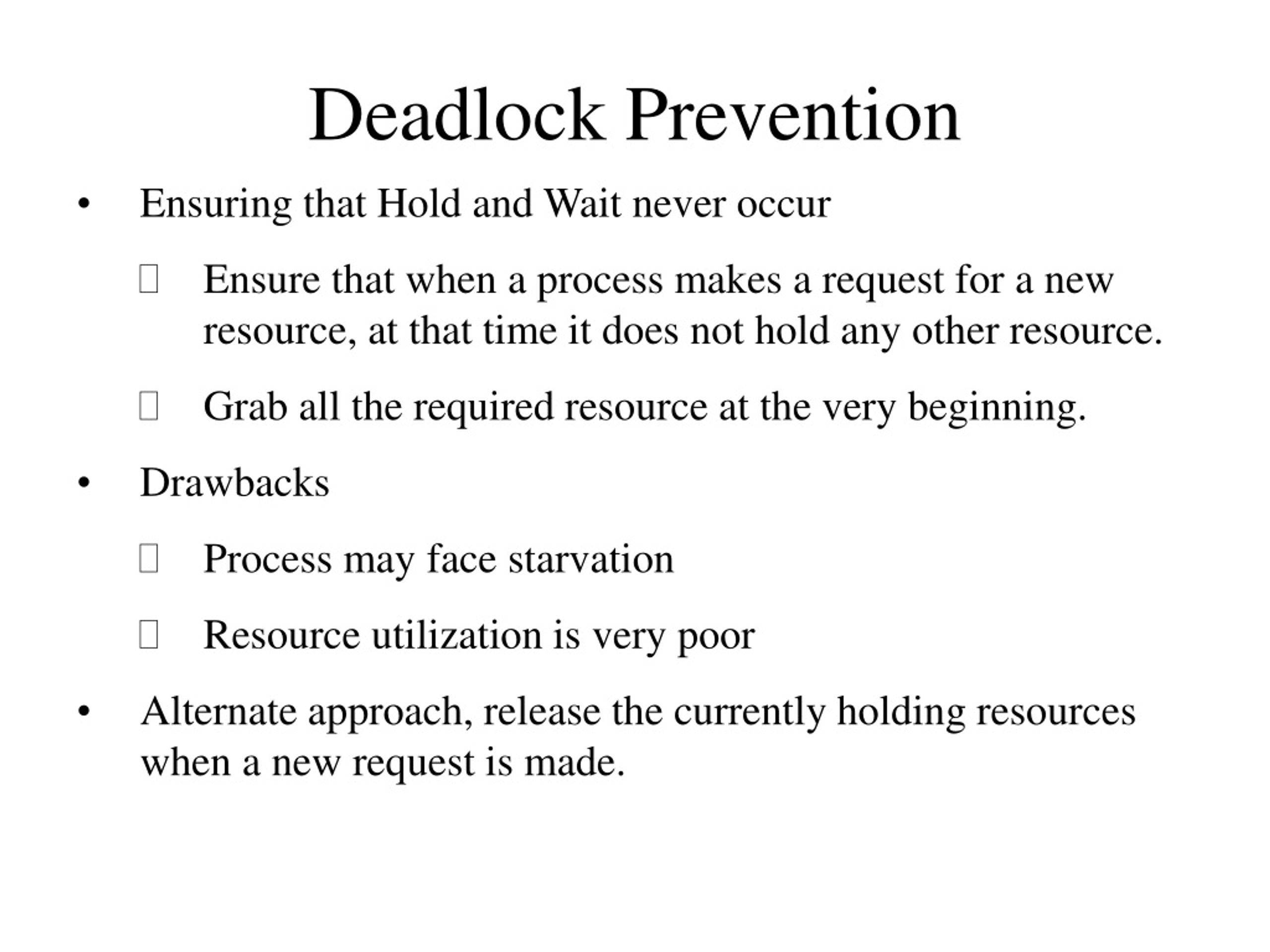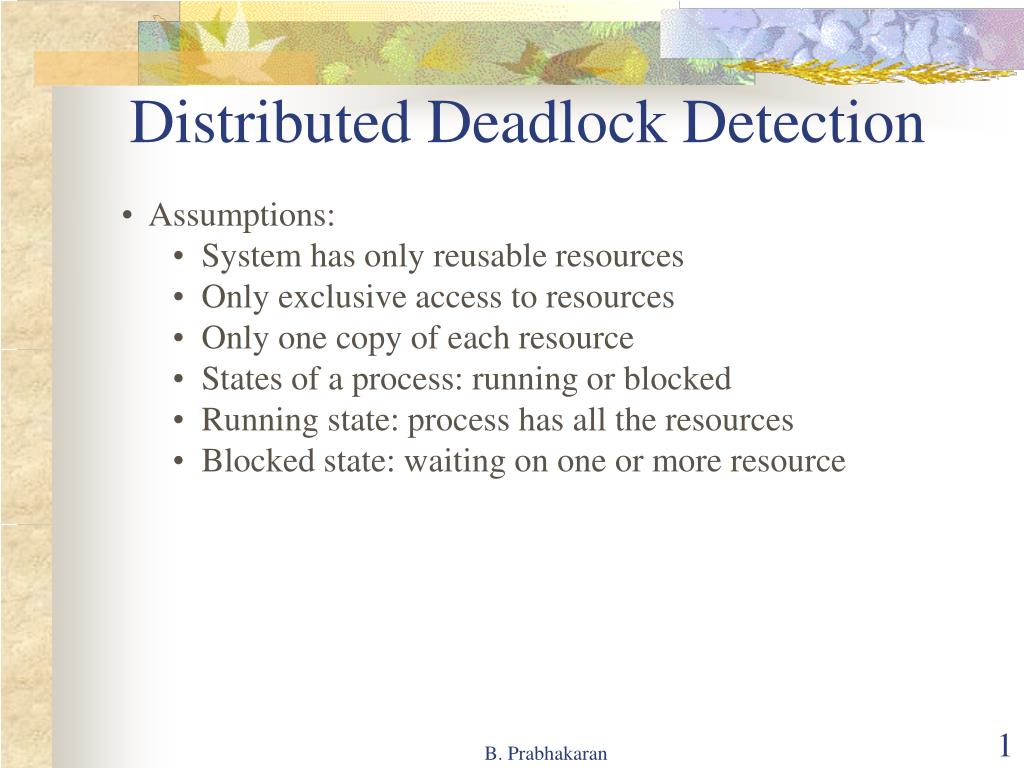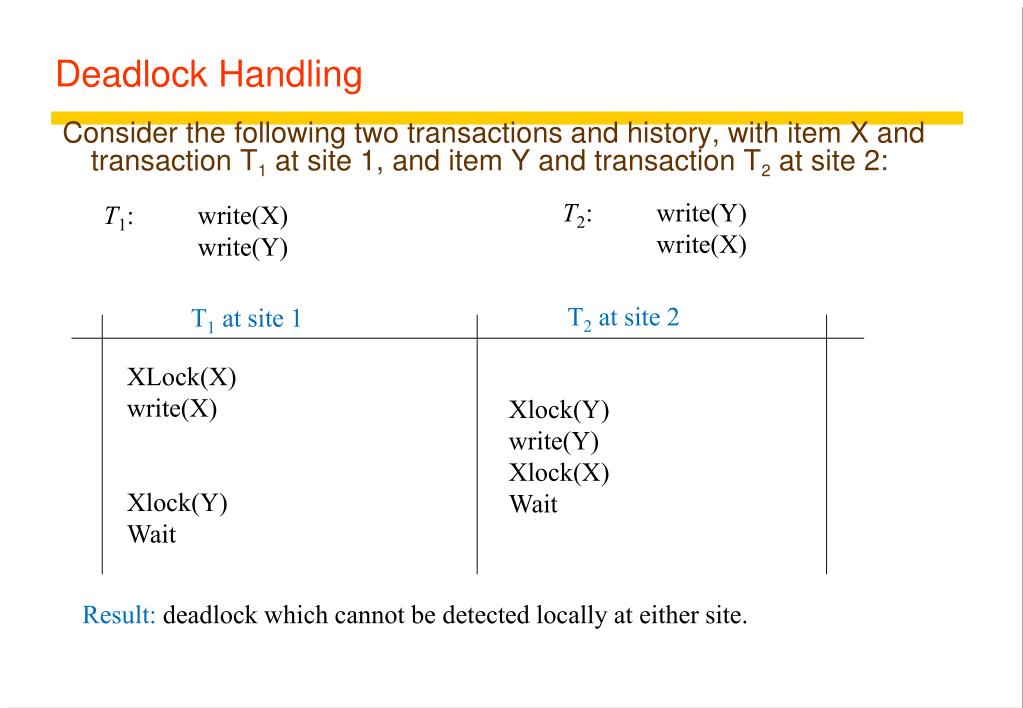

If T 15 requests a data item held by T 10, then T 15 will "wait". Then data item will be preempted from T 10 and T 10 will be suspended. If T 5 requests a data item held by T 10, ExampleĪgain, suppose that Transactions T 5, T 10, T 15 have time-stamps 5, 10 and 15 respectively. This scheme allows the younger transaction requesting a lock to "wait" if the older transaction already holds a lock, but forces the younger one to be suspended ("wound") if the older transaction requests a lock on an item already held by the younger one. Then T n is forced to "wait" until the resource is available.


Which is already held with conflicting lock by some another transaction, one of the two possibilities may occur: T n is allowed to wait only if it has a timestamp larger than that of T k, When Transaction T n requests a data item currently held by T k, It is a counterpart to the wait-die scheme. It is a preemptive technique for deadlock prevention. If T 15 requests a data item held by T 10, then T 15 will be killed ("die"). If T 5 requests a data item held by T 10 then T 5 will "wait". Suppose that transaction T 5, T 10, T 15 have time-stamps 5, 10 and 15 respectively. This scheme allows the older transaction to "wait" but kills the younger one ("die"). T n is restarted later with a random delay but with the same timestamp(n). Which is already held with a conflicting lock by another transaction, then one of the two possibilities may occur: In this scheme, if a transaction requests to lock a resource (data item), (That is T n is older than T k), otherwise T n is killed ("die"). T n is allowed to wait only if it has a timestamp smaller than that of T k When transaction T n requests a data item currently held by T k, It is a non-preemptive technique for deadlock prevention.


 0 kommentar(er)
0 kommentar(er)
